|
|
Niels Viggo Bentzon (Composer) |
|
Born: August 24, 1919 - Copenhagen, Denmark
Died: April 25, 2000 - Copenhagen, Denmark |
|
The prominent Danish comoser, pianist, pedagogue and author, Niels Viggo Bentzon, was practically born into music - he was the first generation of a ‘merger’ of two of Denmark’s greatest musical families - Hartmann and Bentzon. On the mother's side he thus belongs to one of the most eminent Danish musical families throughout more than two hundred years, in as much as his mother, pianist Karen Bentzon, was the grandchild of J.P.E. Hartmann who in his turn descended from the German immigrant Johan Ernst Hartmann. And on the father's side the music manifested itself especially through Niels Viggo's older cousins, the composer Jørgen Bentzon and the flautist Johan Bentzon.
Niels Viggo Bentzon began his piano training with his mother, as well as briefly during his boyhood years by jazz pianist Leo Mathisen. He subsequently studied piano with Christian Christiansen, organ with Bangert, and music theory with Knud Jeppesen at The Royal Danish Academy of Music, Copenhagen during the years 1938-1942. He pasaees succesfully the final examinations in the major subjects mentioned. As a composer he was self-taught, but despite this he won wide recognition from the musical establishment at the earliest possible juncture; specifically in the composer Vagn Holmboe’s review of his debut work Piano Fantasia, Op. 1a, which dates back as far as 1939. By the time he took his degree as an organist in 1942, he had already written 19 works, most of which were for the piano.
In 1943 Niels Viggo Bentzon made his debut as a pianist, and later toured Europe and the USA. He taught at The Royal Academy of Music in Aarhus (1945-1950) and at The Royal Danish Academy (1950-1988). Although a prolific composer, Bentzon also found time to write music criticism, published poetry, and paint. He published Tolvtoneteknik (Copenhagen, 1953) and Beetboven: En skitse af et geni (Copenhagen, 1970). His compositions follow along avant-garde lines for the most part, encompassing happenings, audio-visual scores, and graphic notation.
Niels Viggo Bentzon must be said to be one of the most important figures in 20th-century Danish musical history. He was among the most prolific Scandinavian composers of his generation, with more than 650 works to his credit, often experimenting with avant-garde techniques but in a generally tonal framework. He had a crucial influence on Danish musical life. Today Bentzon enjoys the status of a kind of cultural phenomenon, thanks not only to his great artistic impact but also to his strong commitment in writing and speech to the ongoing aesthetic discussions of the latter half of the last century.
Although the character of Bentzon’s music changed over decades under the influence of various currents, one can safely speak of a Bentzonesque idiom that flows as an undercurrent through his extensive oeuvre. True, the works sounded more expressive and compact in the 1940’s than in the clear, simple and sometimes transparent Neoclassicism of the 1970’s; and true, Bentzon went on a decided artistic excursion in the 1960’s as the main figure behind a number of Fluxus-like happenings; but it is as if the core of the music is sufficiently rooted in his personality to sound characteristically through superficial fluctuations. Bentzon himself described the first two chords in the above-mentioned Piano Fantasia as “the hieroglyph of the whole” - the musical seed material that in some fantastic way remained both cause and effect throughout his life. In that sense it is easy enough to understand Bentzon’s quite special view of making music; he compared the process to going to the toilet, and throughout his life he insisted on the similarity between composing and improvising; the substance and the material are the same – the only difference is the composing’s slightly tighter organization.
Niels Viggo Bentzon’s relationship with his Danish contemporaries was something special; partly because his activities as a composer extended over more than sixty years - so there are many to compare him with - but partly also because his musical idiom has consistently been uniquely Bentzonesque, while at the same time he experimented fruitfully with the various artistic devices the age had to offer. In this context Bentzon’s music can be seen as an alternation between his own strong will and inspiration from the contemporary scene of which he was an openly debating part, but which he also ignored when necessary; Bentzon wrote sonatas throughout his life, regardless of what the age thought was comme il faut. To this we must add Bentzon’s experiments in the dodecaphonic, for example as the author of a textbook in 1953, when the institutions of the day were hermetically sealed off against German modernism in favour of the legacy of Carl Nielsen and a Nordic sound. Nevertheless Bentzon proclaimed metamorphosis to be “the form of our age” in consort with his composer colleague Vagn Holmboe in the 1950’s; he arranged sound collages, wrote ‘mobiles’ and participated in happenings in the 1960s alongside people from the more established Fluxus movement, and he was still neo, when 1970s composers, with Karl Aage Rasmussen at their head, re-opened the gates to classicism. In this way Niels Viggo Bentzon remained himself, while his music changed more or less disinterestedly between being in and out of fashion. |
|
Music |
|
Niels Viggo Bentzon left a most diverse output of more than 600 opus numbers. If one has a look at his extensive life’s work, one quickly realises that the music for piano assumes a central role. This is not surprising: When presenting Bentzon the composer, one invariably has to mention Bentzon the pianist. When it comes to this artist, one can simply detect a predilection for the piano as musical medium. This combination of creator and performer finds his expression in a quite distinctive music, in which the two approaches form the background of a productive synthesis of system and freedom. The composer’s need for control over the material, and the pianist’s desire for free-wheeling fantasy, together create a kind of music that has been described as ‘structured improvisation’. This description of the music, as a balance between rigid structure and free gesture, can be heard in much of Bentzon’s music. It is, both literally and figuratively, a music that goes into the outermost registers: from lyrical, vegetating surfaces of sound that end time, to brilliant, virtuosic phrases or branches of notes of forceful energetic outbursts, as e.g. in the Partita Op. 38, which, with good reason, became the big break-through for the 25-year-old composer. Through the 1940’s, Bentzon wrote works for piano that secured his position as the new, young, impetuous genius. Already at that time, Bentzon had an insatiable craving for discussing, mediating and provoking. He took part in playing the music of Arnold Schoenberg in Denmark in a period when the Carl Nielsen tradition was very strong. But Bentzon wished to get out of his rut, to absorb influences from the newest trends in art music. In his extensive oevre, we also find an abundance of chamber music, symphonies, oratorios, operas, works for string ensembles, concertos, string quartets, music for wind quintet, and much more. In the music of Bentzon, we are not dealing with retrospective tonal music, even though the composer is not afraid to use the familiar techniques of music history, such as fugue and variation. Bentzon got titles such as Toccata, Passacaglia and Partita from the musical forms of the Baroque, and, directly inspired by J.S. Bach, he wrote a large-scale piano cycle entitled The Tempered Piano. As a listener, then, one recognises expressions and phrases from the classical-romantic repertory. It is music that stands shoulder by shoulder with tradition, but at the same time points beyond it. Perhaps it is this exact feature of Bentzon’s music - the various different expressions and the compositional inventiveness - that has caused the works of the composer to eva response with such a wide audience, from jazz-enthusiasts to those interested in contemporary music. If the music can be characterised as pluralistic with a multitude of approaches, then this characteristic goes hand in hand with a description of the man Bentzon; being the all-encompassing, culturally engaged person that he was, the traditional division into genres and working fields seems all too limited. In order to satisfy his creating vein, the artist also worked as painter, provocateur, writer, debater, and teacher. The cultural activist Bentzon engaged in the most diversified culture phenomena - like a sponge, he absorbed impressions from his surroundings and transformed them in his own, deeply original universe. |
|
Works |
|
Dramatic: Operas:
Faust III, opera after Goethe, Kafka and James Joyce 1961-1962; Kiel, June 21, 1964)
Automaten, chamber opera Automaten, based on E.T.A. Hoffmann. (1973; Kiel, May 3, 1974)
Ballets:
Metafor (Copenhagen, March 31, 1950)
Kurtisanen (The Courtesan; Copenhagen, December 19, 1953)
Døren (The Door; Copenhagen, November 14, 1962)
Jenny von Westpbalen (Arhus, September. 9, 1965)
Jubilacumsballet 800 (1968)
Duell (Stockholm, Nov. 12, 1977)
Orchestral:
24 numbered symphonies (1942-1991):
- Symphony No. 4 uses his own version of the technique of metamorphosis
- Symphony No. 5 has the descriptive title Ellipses and develops the same technique
- Symphony No. 7 ‘The Three Versions’, completed in 1952, continues the same stylistic trend
- Symphony No. 8 has the additional title Sinfonia discrezione
- Symphony No. 24 is numbered Op. 597
8 piano concertos (1947-1982)
4 violin concertos (1951-1976)
3 cello concertos (1956-1982)
2 flute concertos (1963, 1976)
concertos for Oboe (1952), Accordion (1962), Clarinet (1970-1971), Viola (1973), Tuba (1975), etc.
Chamber:
11 string quartets (1940-1976)
7 violin sonatas (1940-1973)
5 wind quintets (1941-1957)
4 cello sonatas (1946-1972)
8 sonatas for different solo wind instruments (1947-1973)
4 quartets for 4 Flutes (1974-1977)
Harp Sonata (1986)
Trio Quartetto for violin, cello, & piano (1991)
Quartet for clarinet, violin, viola, & cello (1993)
Keyboard
15 numbered piano sonatas (1940-1981) and numerous other piano pieces
14 volumes of his Det temperede klaver (‘The Tempered Clavier’).
Organ music
Other:
Various vocal works and many occasional pieces |
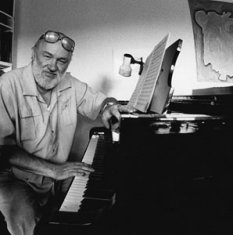
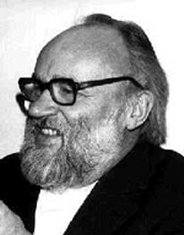
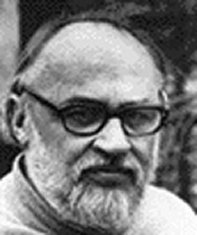
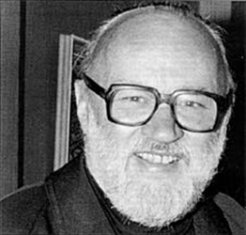
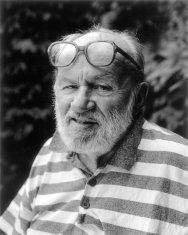 |
|
Source: Edition Wilhem Hansen Website (Author: Anders Beyer, 2000); Naxos Website; Da Capo Records Website; Baker’s Biographical Dictionary of 20th Century Classical Musicians (1997)
Contributed by Aryeh Oron (November 2011) |
|
Niels Viggo Bentzon: Short Biography | Bach-inspired Piano Works: Works | Recordings |
|
Links to other Sites |
|
Niels Viggo Bentzon (Edition Wilhem Hansen)
Niels Viggo Bentzon - biography & discography (Dacapo Records) |
Niels Viggo Bentzon - Bio (Naxos)
Niels Viggo Bentzon (Wikipedia)
BENTZON The Tempered Piano: Classical CD Reviews-May 2000 (MusicWeb).. |
|
Bibliography |
| |
|
|